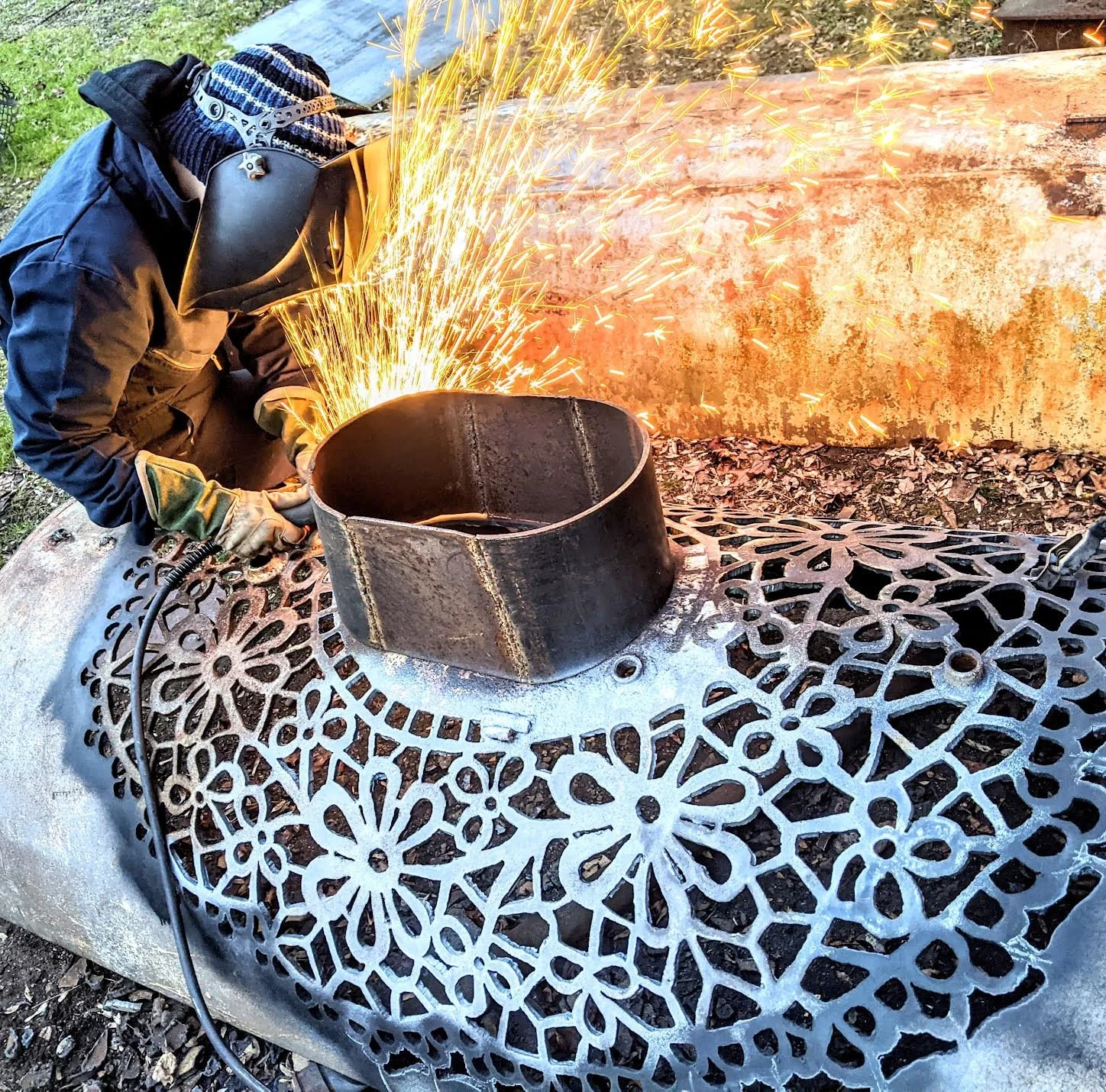Tyler Rock
Black Diamond, Alberta
Studio: How would you describe your approach to your medium? What made you choose it?
Tyler Rock: The approach I take to my medium has taken different forms over the years. One thing that has remained consistent however is that I’ve always been interested in having a dialogue with the materials I use. I suppose most craftspeople you speak with would respond in a similar way.
Working with hot glass demands a responsiveness to the material conditions at play and often split-second decisions are required. I love that about the material and have been humbled again and again as I’ve worked with glass through the years. The process inherently requires that you are attuned and demands attention and focus while you are in the flow. The process has taught me about looking closely at material conditions and the details of the objects I make.
I’ve become interested in bringing forward into the artworks I create what I see as three core values of craft in my practice: the engagement with materiality found through process, the embodied moment experienced within making, and the premise of function as an end use of the craft object. I’ve been using these ideas to create artworks that are site specific in nature and that engage with the experience of the viewer.
Initially I came to working this way through considering the definitions of an artifact. I had always considered an artifact to be the “end” product of my craft practice, a kind of fixed output, a finished state. However other fields have a very different definition. In observational science practices for example, an artifact is seen as an unexpected manifestation that emerges, a disruption like chromatic aberration through a camera lens or telescope. This chance encounter, often due to the glass in the equipment used, I found to be fascinating. An artifact could be a glitch.
Through this broadened definition of an artifact, I’ve been exploring the artifact of my craft practice as remaining in ‘a condition of process’. Instead of being a fixed output, the artifact that I’ve been thinking about remains responsive to a site- specific location and reveals an experience for the viewer. The artifact through the experience of the viewer reveals a second artifact, an open-ended embodied experience beyond the object’s tangible presence.
The artifact I am exploring is responsive to changing conditions and is relational due to how viewers respond to the artwork. Often the sites selected for these artworks and the conditions I explore rely on a sense of normalcy found in everyday environments. The artworks explore a moment of wonder through the materiality of glass, that disrupts the viewer’s everyday sense of temporality.
S: How would you describe yourself, personally and professionally?
TR: I’ve been working as a glassblower for over thirty years. My studio practice and my interests in materiality arise from this foundation. I’m interested in sculptural and craft practices and most of the work I make exists in these realms. I own and operate a glass blowing studio Firebrand Glass with my wife Julia Reimer. Our studio produces commissioned works, one of a kind art objects, craft objects and public sculpture. Another important aspect of my life is teaching. I’ve been an educator for over twenty years, principally teaching in the Glass program at Alberta University of the Arts in Calgary. I’ve also taught workshops and lectured internationally including at the Studio at the Corning Museum of Glass in the United States, as well as at universities in Japan, China, Spain, France, and Australia. I enjoy teaching and I value my career as an educator.
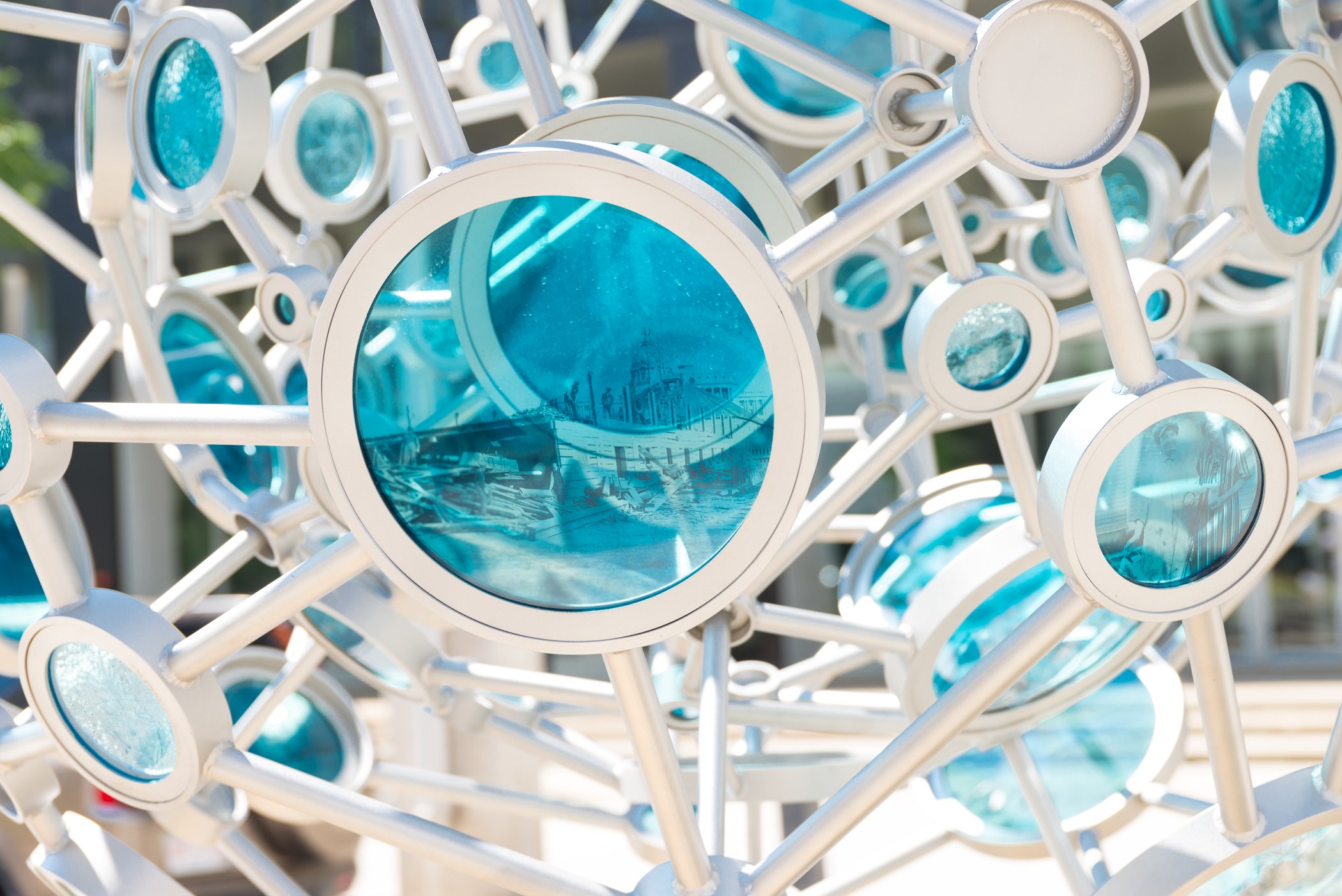
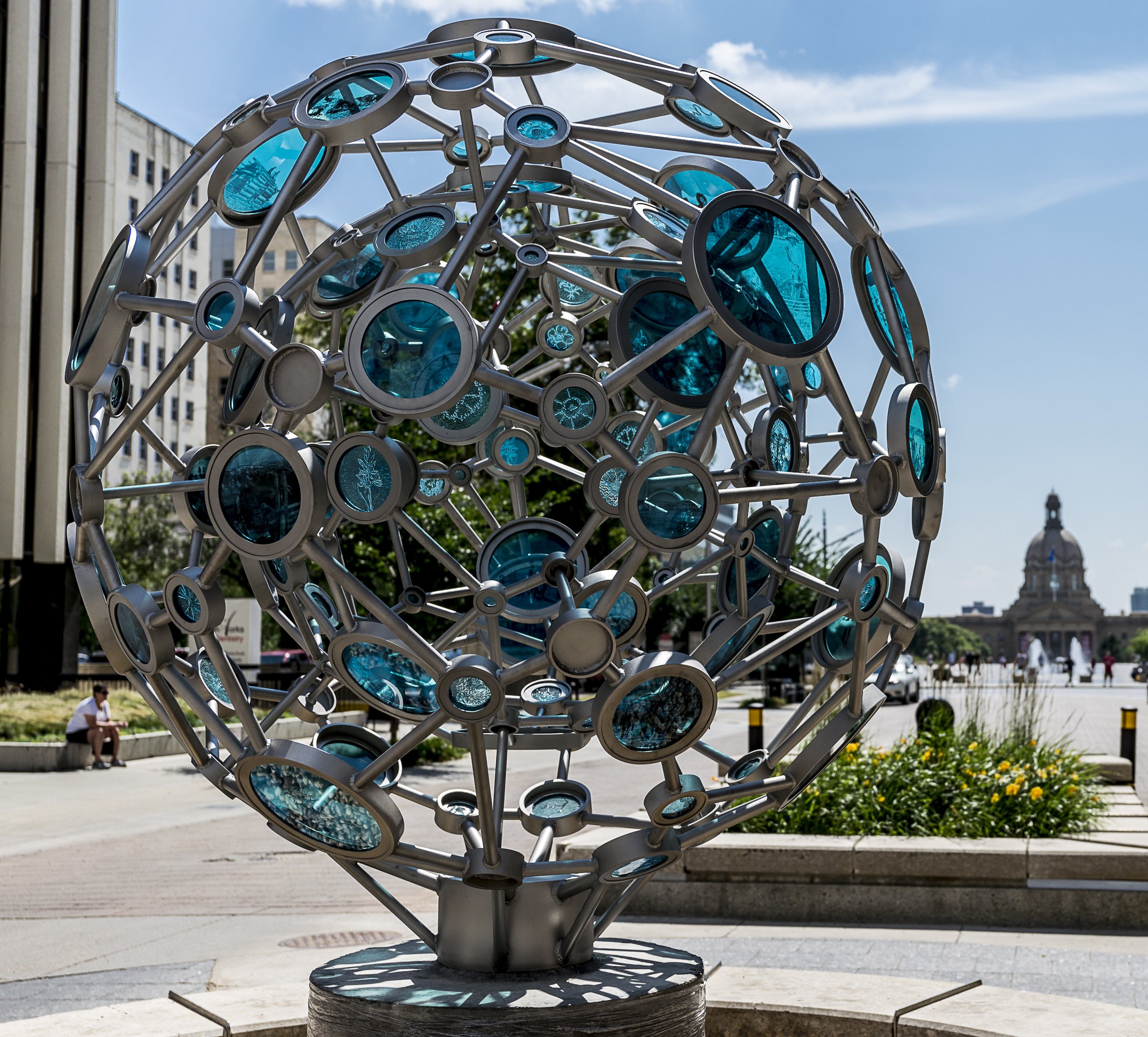
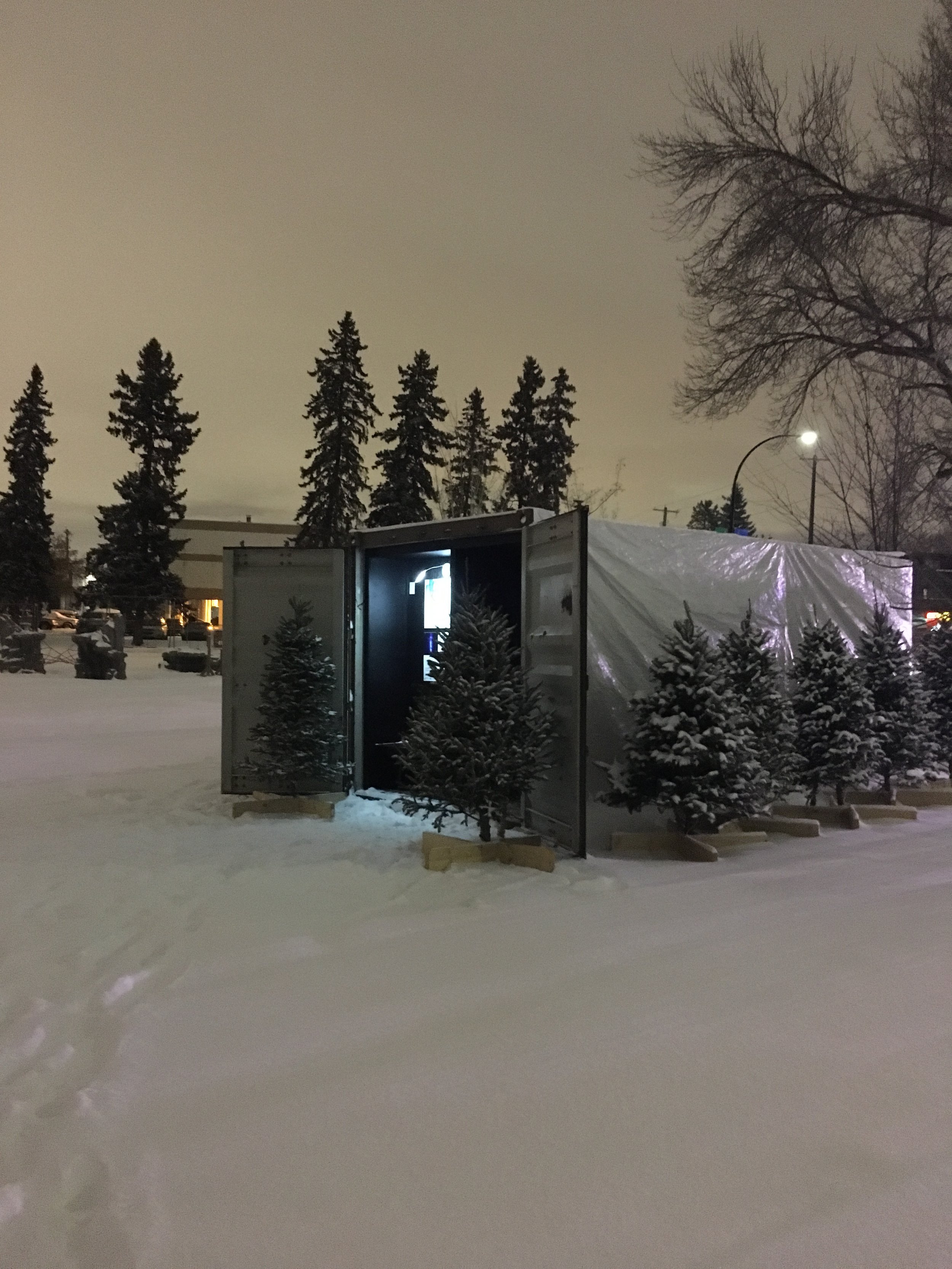
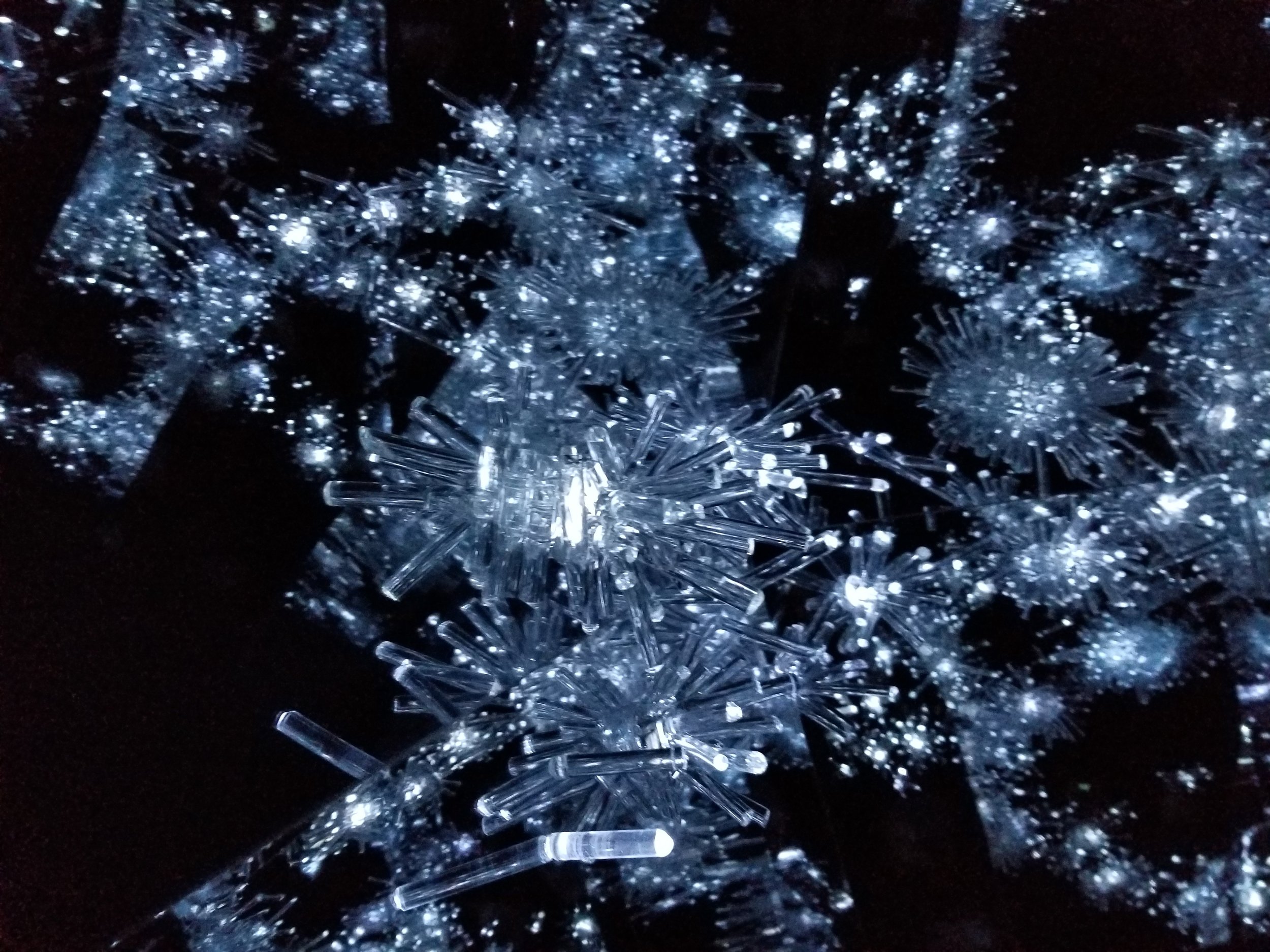
S: What inspires you?
TR: Projects. In recent years I’ve been enjoying working on larger scale projects and working through the logistics of executing these projects. One example might be the public artwork Transect that our studio Firebrand completed for the Capital Blvd. Project in front of the Alberta provincial legislature building for Canada’s 150th anniversary. The project unfolded from selecting a few words from the project brief including the word Landmark. This led us to begin thinking about how glass and light might combine to create an experience that actually marks the ground around the sculpture at certain times of day through the use of coloured glass and the sun. The sculpture acts like a sun dial. The word landmark and the project brief also led us to want to create a sculpture that brings awareness to the built environment surrounding it. We approached this through selecting a variety of images that highlight the provisional nature of construction and the history of the immediate area such as buildings and bridges being constructed. In the images and how they interact within the sculpture through their transparency, we brought awareness to the effort and enterprise that lead to the built environment surrounding us that is often taken for granted in our everyday lives. I enjoy how the sculpture looks instrumental, uses the materiality of glass, and acts like a pseudo time machine.
Another example, Winter’s Breath, was commissioned by the Flying Canoe Volant winter festival in Edmonton, and was presented in Edmonton and in Montreal as a part of the Illuminart festival & Nuit Blanche. Our premise for the artwork was the sensation of freezing winter nights and the feeling of isolation that comes with being bundled tight. The work that was built in a shipping container is constructed as a journey. Highlighting the feeling of isolation, making visible breath, and the sense of expansiveness sometimes found in the winter world. The journey is revealed through a series of turns inside the container. Each person entering the work initially meets with an unexpected image of themselves isolated within a floor to ceiling mirror. Edge lighting then reveals and highlights their breath. The journey then culminates in a spherical mirrored space filled with backlit glass crystals. The mirrored room creates an infinite sense of space, with the glowing crystal structures hovering in space like snow, like frost patterns, like a model of breath crystallizing on a molecular level.
S: What do you see as your contribution to the field of your craft, your legacy?
TR: Legacy seems like such a heavy word to me. As a committed maker of objects, I am cognizant of the durability of the materials I use. Glass objects potentially could live well beyond my years or be broken in an instant. I would hope that the ideas embodied in the work might continue to be relevant to the people who enjoy the objects and to makers in the future. My voice is part of a continuum of craftspeople. I think approaches to material and expression is something that is developed through seeing and doing. I also believe that the relationships I’ve developed while working, while teaching and while making artwork are a rich and important part of my life. I hope in a small way that some of our discussions will carry on and evolve with the people I have worked with.
S: What wisdom do you want to impart to younger makers?
TR: Take the time to develop and evolve how you wish to express your ideas. The expression of ideas can take many forms and can be manifested in many different ways. As you develop the means of expression through material, try to work in a way that enables you to keep a record of the idea development you have gone through. It often amazes me that I can connect a through-line with the projects I am working on now to ideas that are in my sketchbooks from twenty years ago.
Tyler Rock
w: firebrandglass.ca/tyler-rock
ig: @firebrand_glass_studio
This article was published in the Spring/Summer 2022 issue of Studio Magazine.





